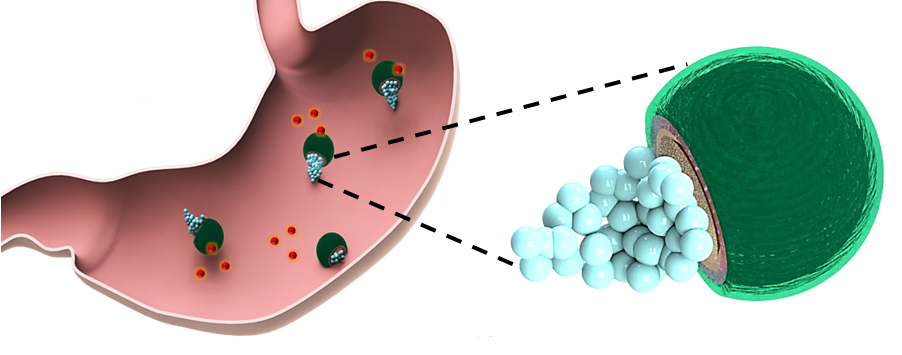Nanoengineers Made Antibiotic-Carrying Micromotors to Treat Infections
Credit to Author: Ankita Rao| Date: Wed, 16 Aug 2017 16:01:44 +0000
Antibiotics are meant to kill bacteria, but sometimes the drugs are sensitive to stomach acid, becoming ineffective on their way to fighting off nasty infections in the gut.
Now nanoengineers at the University of California San Diego have figured out how to transport antibiotics directly to the site of an infection, while protecting them from acidity: by sending the medication into the body with “micromotors,” little vehicles made of magnesium, titanium dioxide, and a polymer called chitosan, which is made from crustacean shells. They published their findings in Nature Communications today.
After testing the micromotors in vitro—i.e. in a petri dish—the researchers tested them in live mice for the first time. They were able to treat infections caused by Helicobacter pylori, bacteria that can live in the digestive tract and cause ulcers, by sending an antibiotic called clarithromycin in the vehicles, which are half the width of a human hair, to the affected areas.
Once the micromotors are in the body, the magnesium cores generate a stream of microbubbles that propel the motors inside the stomach. This reaction also temporarily reduces acid in the stomach and increases the pH level until the drug is administered. After five consecutive days of treatment in the lab mice, researchers found that the micromotors were “slightly more effective” than using the other common method, proton pump inhibitors, and potentially safer.
Proton pump inhibitors are substances that have a longer lasting reduction of gastric acid production so that drugs can remain effective. But used long term, or in high doses, they can take a toll on the body—leading to headaches, diarrhea, and even depression. If the use of micromotors can be scaled up so humans can benefit from them, the vehicles will instead neutralize the gastric acid. In the mice, the normal stomach pH was restored within a day.

“It’s a one-step treatment with these micromotors, combining acid neutralization with therapeutic action,” said Berta Esteban-Fernández de Ávila, a postdoctoral scholar in Wang’s research group at UC San Diego and a lead author of the paper said in a statement.
At a time when the effective use of antibiotics is increasingly important—antibiotic resistance continues to threaten our ability to fight off infections—new innovations in this field could help develop more precise and less invasive ways of administering medication. As the researchers get ready to test the micromotors in more living organisms, there’s hope this could be part of the next generation of medicine.
Get six of our favorite Motherboard stories every day by signing up for our newsletter.